Stroll through an October farmers market, and you’ll enter the vast, diverse, and wild world of winter squash. To the naked eye, it’s both thrilling and overwhelming. Hello, funky shapes and interesting-looking characters. What do they taste like? How do they differ? Which are better suited for dining room décor? Deep breaths. We have all the answers (plus some). In a matter of minutes, you’ll master the art of squash: how to cook squash, choose oddball varieties, and school your family during Thanksgiving dinner. Let’s turn a daunting situation into a colorful grocery basket—and an equally hearty meal.
Feature image by Michelle Nash.

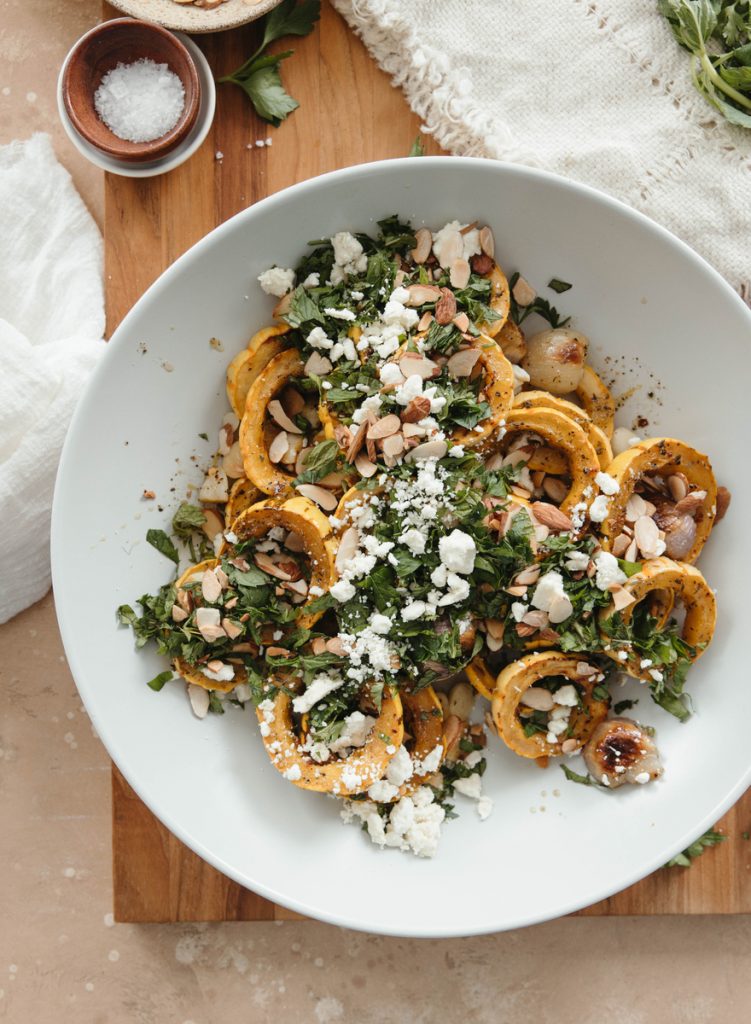

What is winter squash?
Let’s start here. All squashes and pumpkins belong to the gourd family. And all varieties—summer, winter, pumpkin, and decorative gourds—are planted in the spring. That said, we’ve come to call them by the times of year we eat them (i.e., summer squash is harvested—you guessed it—in summer). Summer squash is picked when it’s young and super tender, whereas winter squash is left to grow to full maturity.
Most winter squash varieties can be divided into three main groups, classified by species: Cucurbita maxima (kabocha, hubbard, red kuri, buttercup, and banana squash), Cucurbita moschata (butternut and honeynut), and Cucurbita pepo (acorn, spaghetti, delicata, field pumpkins, and non-edible gourds).

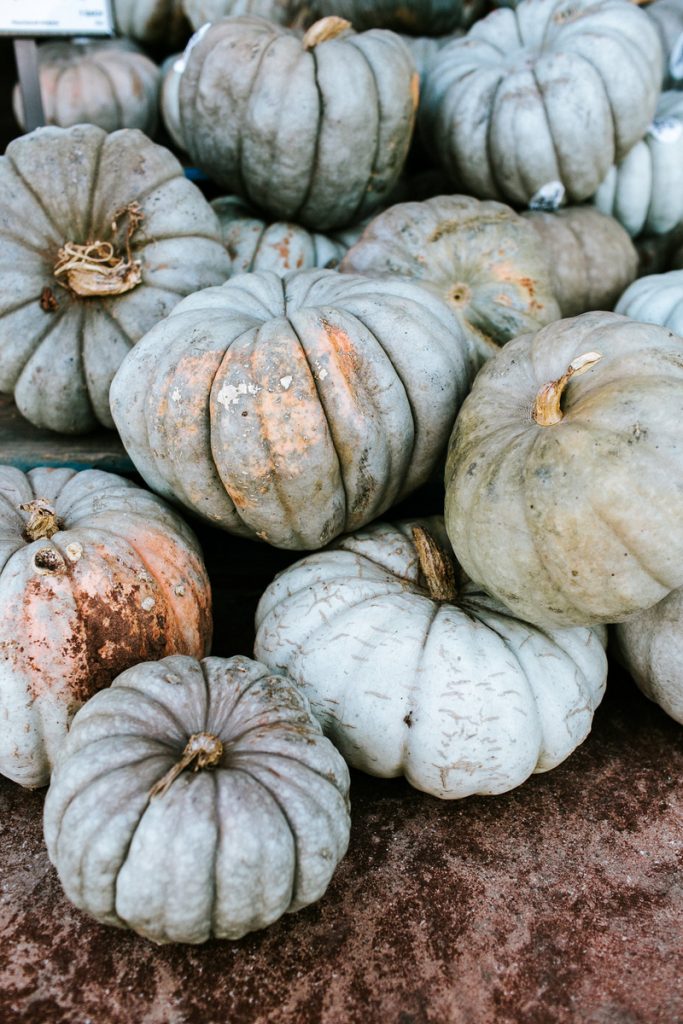
When is winter squash season?
Winter squash season starts in the fall. While all varieties are harvested in September and October, only those belonging to the Cucurbita pepo species—like, spaghetti squash—are ready to go straight to market. The others need a few weeks of curing. Really, this just means they’re set aside at room temperature and left alone to finish developing all their traits (sugars, textures, and flavors). Once they’re harvested, winter squash can keep in a cool, dark, dry place for several months. After a squash is cut, store it in the fridge for 4-5 days.

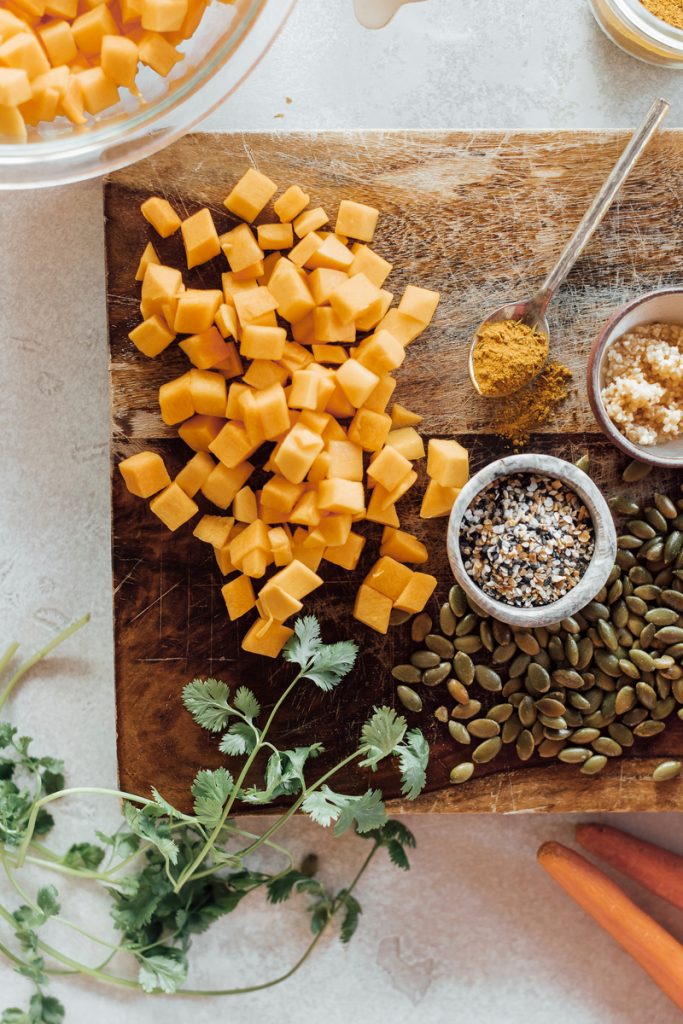
How To Pick the Best Winter Squash
No surprise here: for the best winter squash experience, you want to wait until they’re in season. Ideally, go for locally-grown—either at your grocery store, farmers market, or CSA. Typically, you’ll find the widest range of squash at the farmers market. Regardless of where you’re shopping, the same rules apply. First, you want a squash with a stem attached. This helps squash retain its moisture. Secondly, choose a winter squash with a hard rind. It will feel firm and heavy for its size. Lastly, avoid any with a wrinkly rind, punctures, or soft spots.

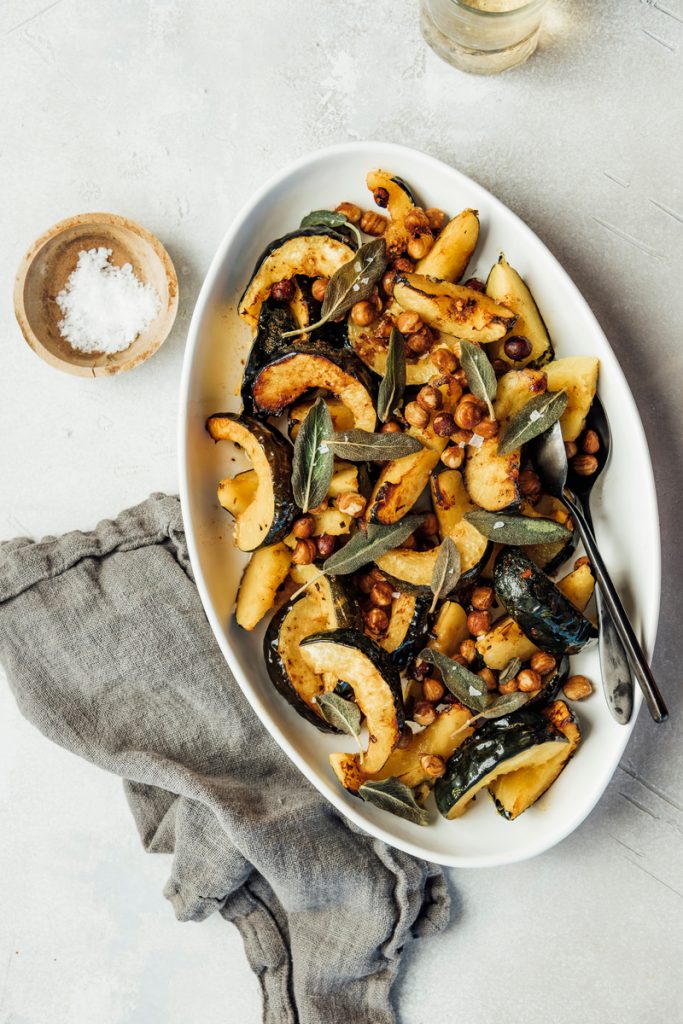
Helpful Tips for Cutting Winter Squash
If you’re new to handling a thick-skinned winter squash, we’re here to help. One of the most important pieces of the puzzle is knowing how to cut a winter squash. Work smarter, not harder.
Use a large, sturdy knife
For the love of all things squash, leave your small knife for zucchini. Winter squash requires a large (think: eight inches or larger), relatively heavy, and sharp chef’s knife. A sturdy blade will make it easier to slice, while the heavier weight will give you more control.
Trim the ends of the squash
Before cutting through the center of the squash, trim the ends (the root and stem). This creates flat sides, making it easier to stabilize on the cutting board.
Heat winter squash in the microwave
This makes the task of cutting a winter squash a lot easier. Score the squash around the outside, then microwave it for up to five minutes. This softens the flesh and lessens the battle against your chef’s knife.
When in doubt, cook it whole
If cutting any type of hard winter squash feels too intimidating, just cook it whole. Use the oven, slow cooker, or an instant pot. Once it’s done, your knife should slide through the outer flesh.

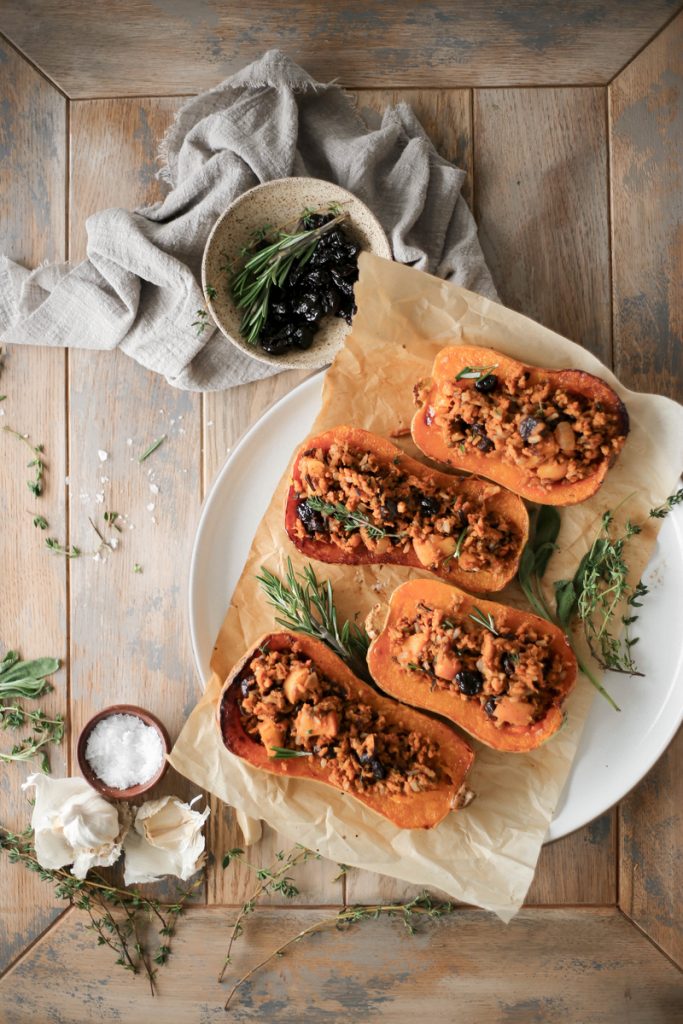
How to Cook Squash: 4 Ways
Below are four ways to turn your winter squash into a dish of caramelized goodness. Ultimately, the method to your madness will depend on a few things: the type of squash you’re eating, the recipe you’re making, and how much time you have in the kitchen.
1. Bake Winter Squash
- Cut smaller squash (like delicata squash) in half. Scoop out the seeds.
- Place the squash cut-side down on a baking sheet. Drizzle with avocado oil, sea salt, and pepper.
- Bake at 350 degrees Fahrenheit for about 30 minutes, or until easily pierced with a fork.
- Use in quiches, frittatas, or muffins.

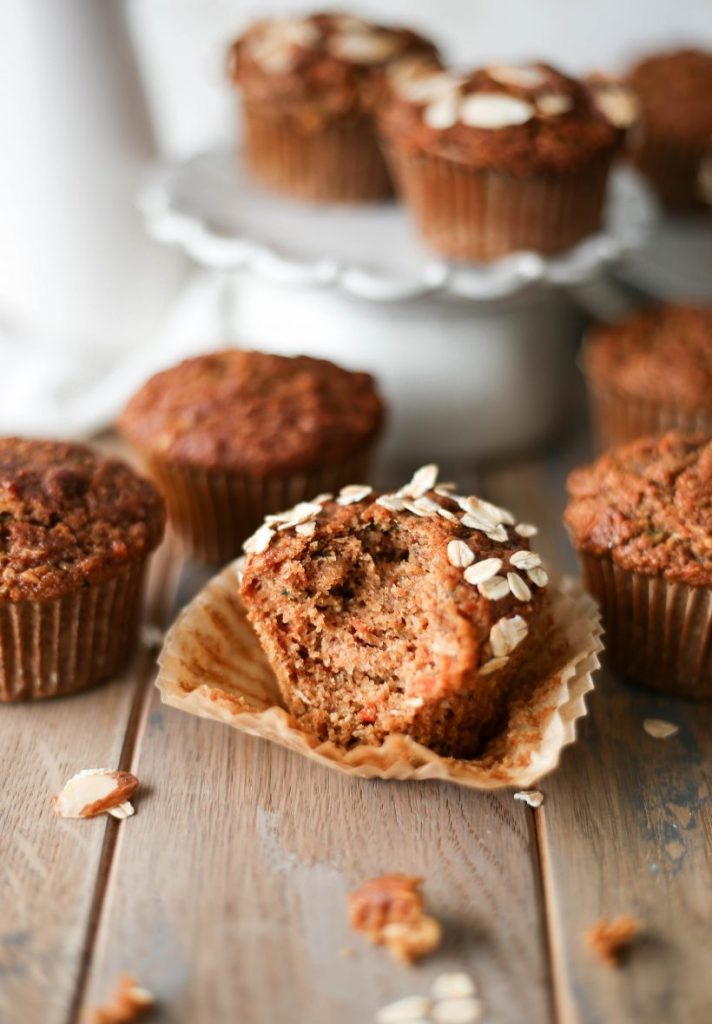
2. Roast Winter Squash
- Cut a larger squash (like butternut or acorn) in half and remove the seeds. Place the squash halves, cut-side up, on a baking sheet.
- Brush butter, ghee, or coconut oil on squash. Sprinkle generously with sea salt and pepper.
- Roast for 40-50 minutes at 400 degrees Fahrenheit.
- When the squash has cooled the skin should peel off easily.
- Use in grain bowls or salads.

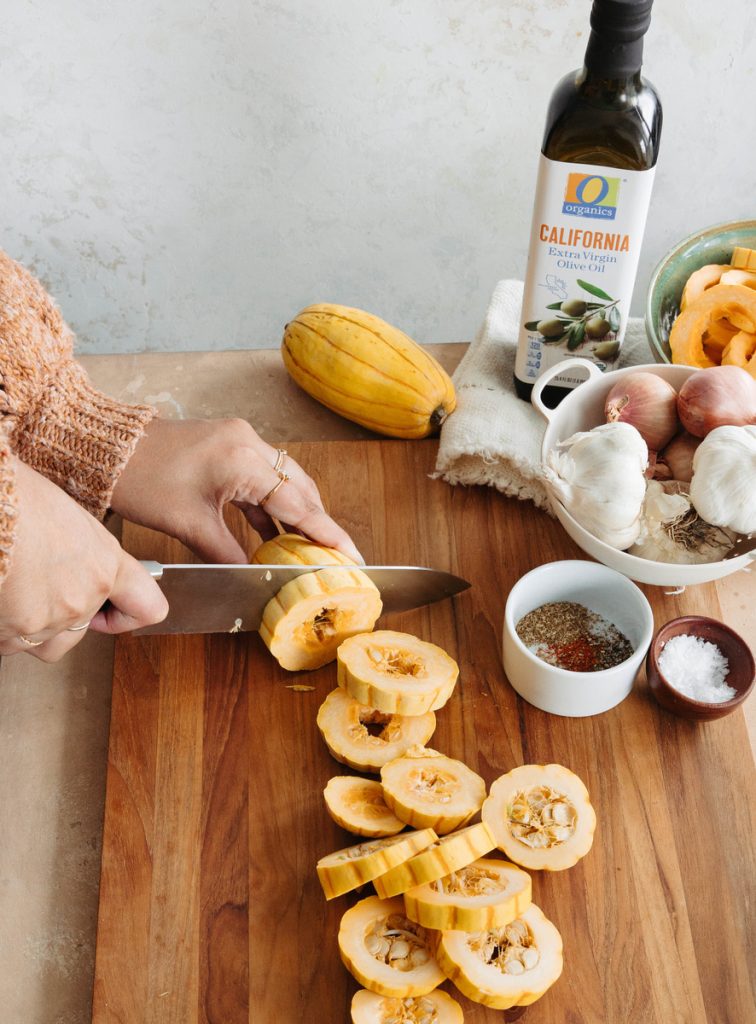
3. Boil Winter Squash
- Cut the squash in half and remove pulp and seeds. Peel and cut the squash into chunks.
- Place in a saucepan and cover with water. Bring to a boil and cook until the squash is tender.
- Use in soups, for baby food, etc.


4. Microwave Winter Squash
- Cut the squash in half and remove pulp and seeds.
- Microwave on high for 7-8 minutes, per pound.
- Use in pies, purées, etc.

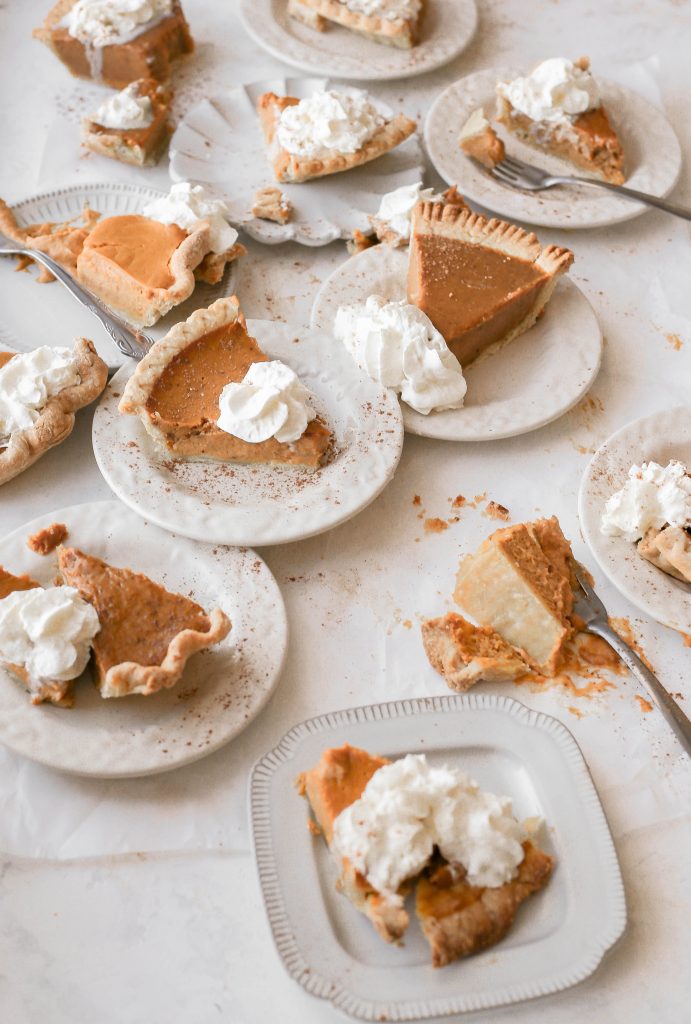
8 Types of Winter Squash
Now that you know how to choose, store, and cut winter squash, let’s dive into eight types of (common) winter squash—plus, the best dishes to pair them with. Keep in mind that all squash skin is edible. However, in the same way you’re going to toss banana peels, edible doesn’t necessarily mean you want to eat it. Some squash has thin skin that’s tasty and tender, while others have a tough shell. We recommend eating butternut, spaghetti, and sugar pumpkin without their skin.

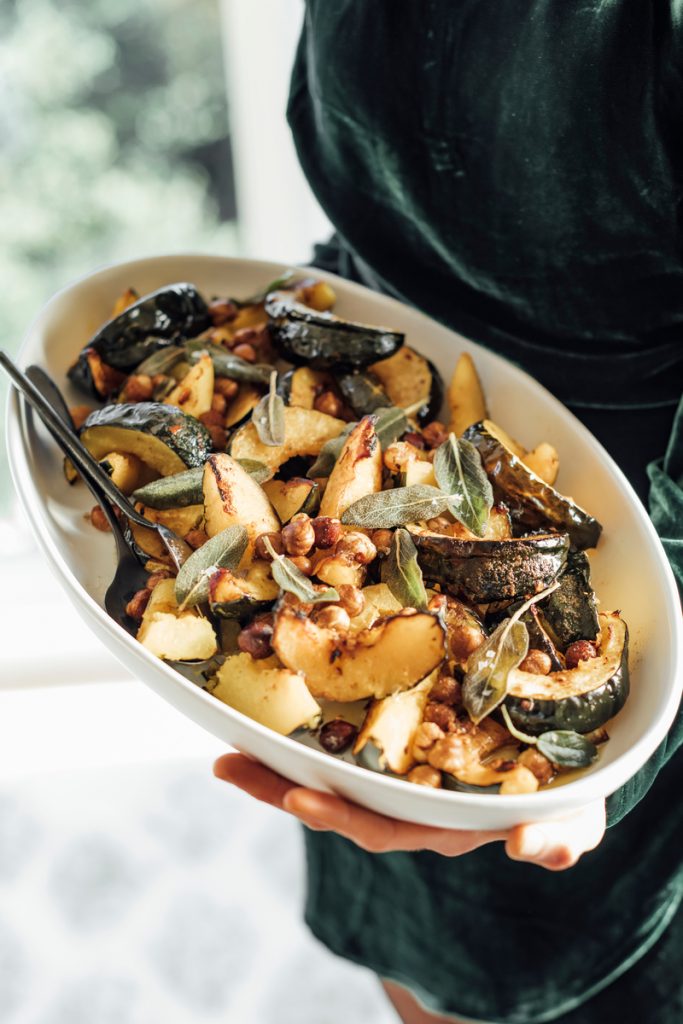
Acorn
These come in green, yellow, and and orange. As their name suggests, they come shaped like an acorn with deep ridges running from stem to tip and smooth, firm skin. You can eat the flesh, as it’s relatively soft and succulent. Acorn squash tastes mildly nutty and earthy. Acorn squash is delicious stuffed with grains, herbs, and pomegranate seeds. Otherwise, roast it with brown butter.
Recipe: Rosemary Roasted Acorn Squash

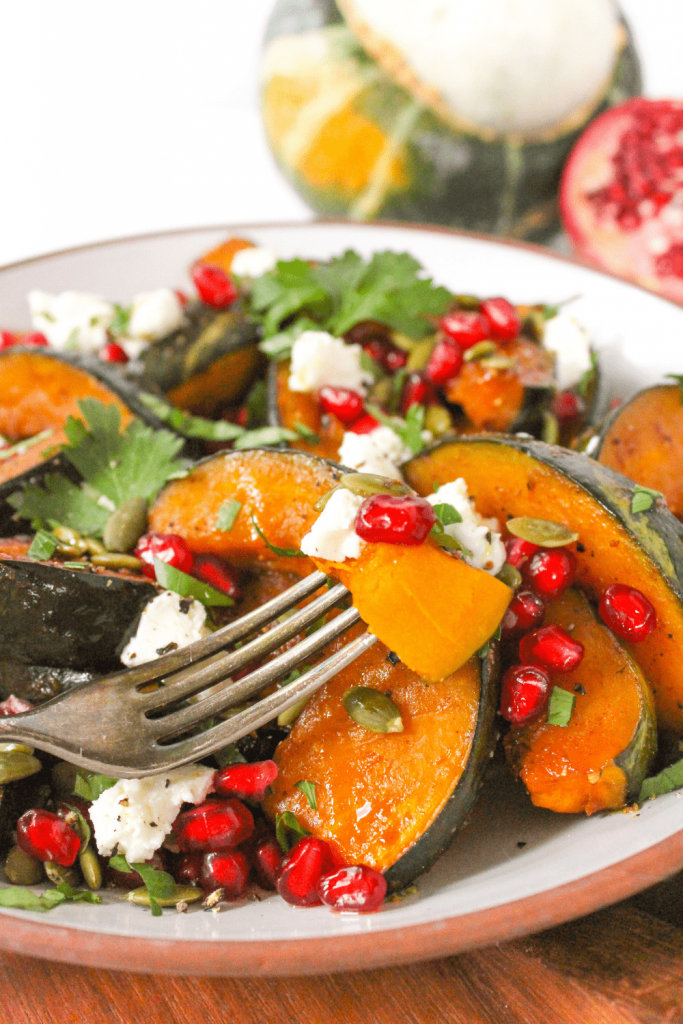
Buttercup
Like acorn, buttercup squash comes in dark green and deep orange. They stay in the small-to-medium size range. They’re round, bulbous and stocky. Green buttercups have orange flesh and smell faintly of cucumber when you cut into them! Cooked, they taste sweet, pumpkin-y, and nutty. Orange buttercups have yellow flesh that tastes similar to a sweet potato. Buttercup is best roasted with olive oil, maple syrup, and sea salt.
Recipe: Baked Buttercup Squash With Goat Cheese by fANNEtastic food


Butternut
One of the most popular types of squash, butternut squash has a creamy, pale orange exterior. The easiest way to prepare butternut squash is cut it into two sections—the slim neck and the bulbous, bell-shaped bottom—and handle each separately. Butternut squash skin is fairly easy to peel, but both the skin and seeds are edible! Its flesh isn’t stringy and tastes similar to a sweet potato. Turn butternut squash into soup or roast and stuff it with veggies, grains, or ground turkey. Otherwise, toss it into a dreamy winter pasta.
Recipe: Roasted Butternut Squash Stuffed With Goat Cheese, Figs, and Pesto

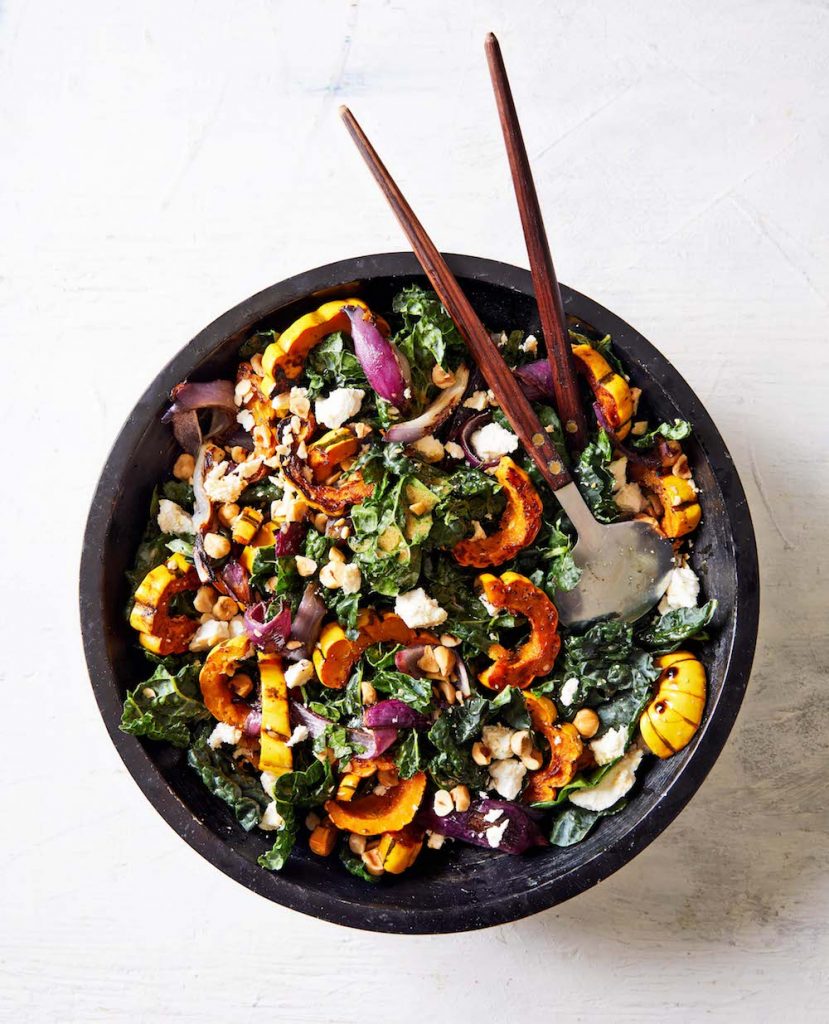
Delicata
A personal favorite, delicata squash is a small-medium, cylindrical squash. It has rounded ends, and thin yellow skin with green or yellow tripes. They won’t weigh down your grocery bag and they require very little effort to cook. Their skins are thin and their flesh is tender, making them easy to slice into. Roasted delicatas are so satisfying. Enjoy delicata squash alongside any protein, baked tofu, or in a salad with kale.
Recipe: Warm Roasted Delicata Squash And Kale Salad

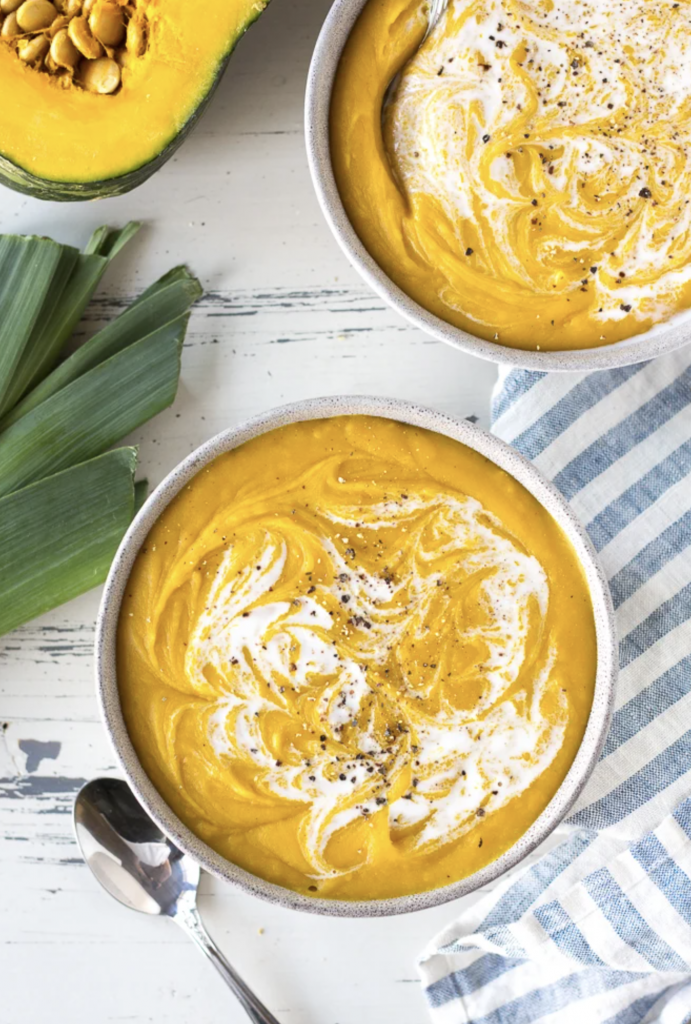
Kabocha
Also known as Japanese pumpkin, kabocha’s sweet, bright-orange flesh tastes like a cross between pumpkin and sweet potato. Round and squat with faint ridges, kabochas range in size and weight. Their smooth skin is dark forest-green with gray-green streaks or splotches. No need to peel it! Their flesh is golden-orange and dense, dry, and velvety. In Japan, kabocha is widely used in tempura.
Recipe: Kabocha Squash Soup by Hot Pan Kitchen

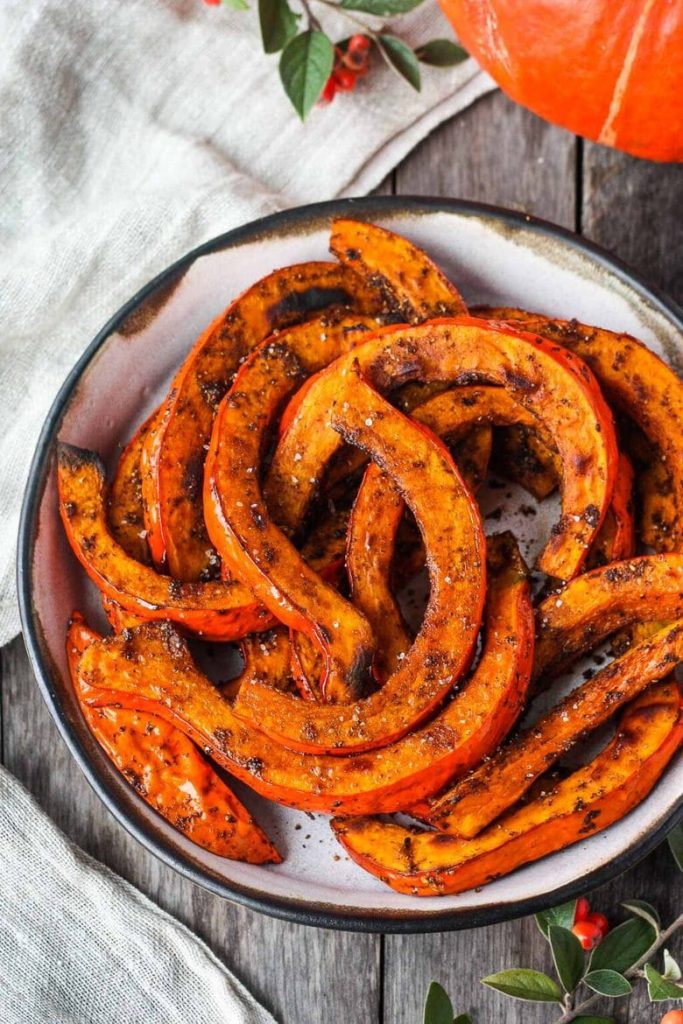
Red Kuri
Vibrant orange, red kuri squash has a glorious earthy-nutty flavor. Originating from Japan, kuri actually translates to chestnut. Red kuri squash’s texture is tender yet firm, smooth, and creamy. They have a very tough skin, so don’t bother removing the skins before you cook them. Try baking red kuri with a chili-maple glaze and pair with shredded pork, tempeh, or roasted turkey.
Recipe: Roasted Kuri Squash by Feasting At Home

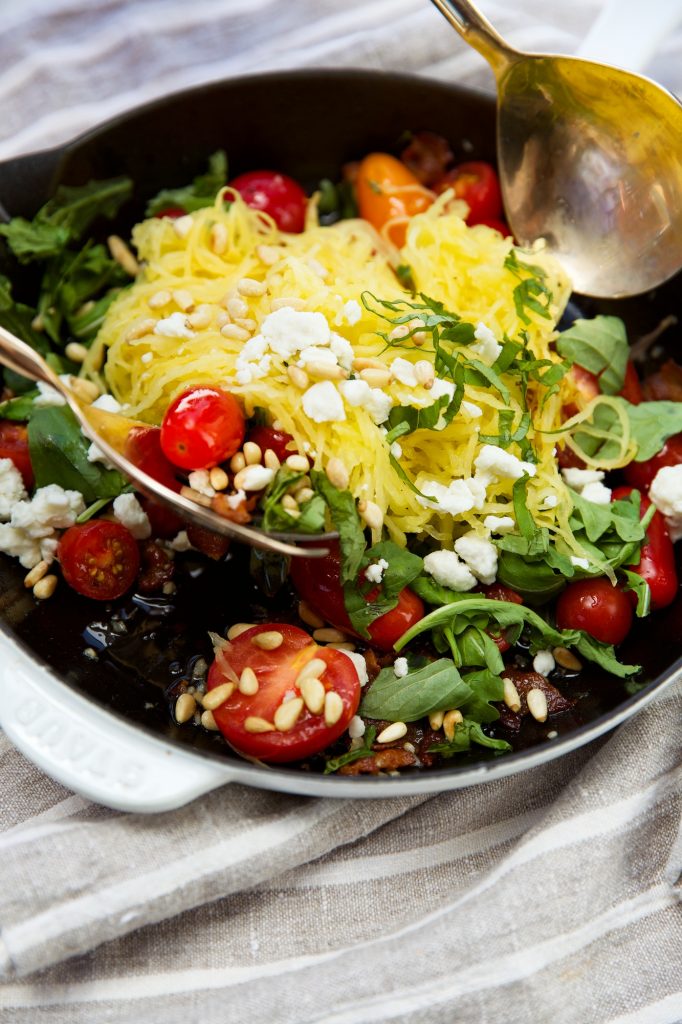
Spaghetti
Infamous spaghetti squash. Oblong and cylindrical with smooth skin, spaghetti squash range from 4-8 pounds and have smooth skin in various shades of yellow. No matter the differences in color on the outside, all spaghetti squash have a pale, translucent flesh. It separates into stringy strands and resembles pasta. They’re very mild in flavor, so they pair well with pretty much whatever you want to put on them. If you’ve been searching for a low-calorie, high-fiber alternative to pasta, this is it. Once cooked, scrape the flesh into strings that resemble spaghetti noodles.
Recipe: Spaghetti Squash Pasta With Goat Cheese, Arugula, and Bacon


Sugar Pumpkin
Also called pie pumpkins, sugar pumpkins are not the pumpkins you carve for Halloween. Like their larger counterparts, they have bright orange skin, but sugar pumpkins are small and round with bright-orange flesh. Sugar pumpkins have a classic pumpkin flavor. You can puree them to make your own pumpkin pie from scratch. On the savory side, sugar pumpkins are delicious in soups and curries.






